Installing a built-in washing machine under the countertop
 Built-in washing machines under the countertop are a special type of compact household appliances. Its main difference from conventional washing machines is that it can be discreetly placed in a small room. It fits perfectly into any interior, regardless of style. However, installing such a machine is not always easy, especially if you don’t know the nuances. These are the ones we should talk about in detail.
Built-in washing machines under the countertop are a special type of compact household appliances. Its main difference from conventional washing machines is that it can be discreetly placed in a small room. It fits perfectly into any interior, regardless of style. However, installing such a machine is not always easy, especially if you don’t know the nuances. These are the ones we should talk about in detail.
Where to start installing a washing machine
The built-in machine has been purchased, the table top with a niche has been made, it’s time to start preparing for installation. First of all, let's collect everything necessary tools and components to connect the machine with electrical and plumbing communications, we will need:
- necessary fasteners;
- a set of keys of different sizes and an adjustable wrench;
- pliers;
- laser or regular tape measure;
- household level;
- sealing tape and automotive sealant;
- screwdriver and ammeter;
- water hoses and filters of suitable diameter;
- crimp coupling or tee;
- special shut-off valve;
- sharp knife.
When preparing to install a built-in machine with a removable lid, you must carefully read the instructions that come with it. Most likely, the manufacturer has already prescribed some nuances of its installation in order to avoid mistakes on your part.
It is especially important to understand how to connect the machine to electrical communications, so no amateur work - follow the manufacturer’s instructions.
Machine installation algorithm
Installing a washing machine under the countertop consists of the following steps:
- Connecting the machine to the water supply.
- Installation of sewer hoses.
- Installing the machine in its permanent place.
- Power connection.
To connect to the water supply system, you only need cold water supply. The hose going from the pipe to the machine should be located at an angle of 350, provided that the water intake point is to the left of the machine (when looking at it from behind) and 450, provided that on the right. So, we connect the inlet hoses:
- We take the wiring element and build it into the inlet.
- Then we screw the shut-off valve onto it.
- We connect the inlet hose that comes with the washing machine to the valve.
Don’t forget to seal all threaded connections with tape and sealant.
The sewer can be connected in one of the following ways: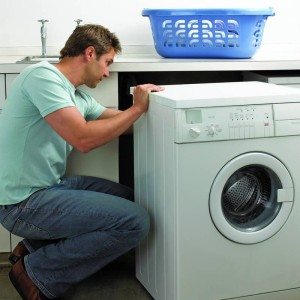
- Screw the siphon to the o-ring of the sink drain hole. And connect the drain hose to the side outlet of the siphon, secure it with a clamp and seal it.
- Connect the drain hose directly to the sewer pipe, preventing waste water from entering the machine.
Important! The water drain point should be at a height of 60 to 90 cm from the floor.
Installation of the machine itself can be done in one of the following ways:
- The washing machine is placed in the kitchen in a separate cabinet with side walls, a front door and a countertop at the top.
- The machine with fastenings for front doors is placed between the individual parts of the kitchen unit, connected to each other by the countertop.
- The washing machine is located similarly to the previous option, only the front doors are attached not to the machine, but to the side strips of the furniture.
- The machine is installed between parts of the kitchen unit under the countertop, but is not closed with doors in front.
For any placement of the machine, the back wall of the furniture should be absent. This will ensure free placement of the hoses and prevent them from twisting.
The final step is to connect the machine to the power supply. It must be carried out through a grounded outlet. You will learn more detailed information about installing a washing machine from the video.
Installation problems
When installing machines under a countertop, unexpected problems may arise. In fact, all these problems are generated by small nuances that we did not pay attention to right away. The main problem may arise if there is not enough space for installing the machines. You shouldn’t rely on the fact that the machines are already narrow, and the hoses can be placed somehow - calculate the depth in advance with a margin of ten centimeters.
Important! There must be a gap between the side walls of the set (cabinet) and the machine so that when the machine vibrates, it does not hit these walls.
The width of the tabletop also plays a role. The depth of the machine should not be allowed to match the width of the tabletop. This way, water and liquid from food will drain from the surface of the countertop and end up on the washing machine, which can lead to dire consequences. Furniture must be made so that the built-in machine is completely closed.
When taking care of the correct installation of a built-in washing machine, you should not forget about the countertop itself. You need to place it at a height that is comfortable for you: not too low, but not too high. This way you will ensure maximum comfort for yourself.
During the installation process, difficulties often arise due to the lack of length of the inlet hose included in the kit that came with the machine. In this case Experts advise not to save money and not to extend the hose; it is better to buy a new one of suitable length. Otherwise, you can cause a real flood. In addition, when installing the machine in place, do not neglect strengthening the floor under it and working with a level. Strengthening the floor and leveling the machine will reduce vibration and noise from it.
Types of built-in washing machines: which ones are better?
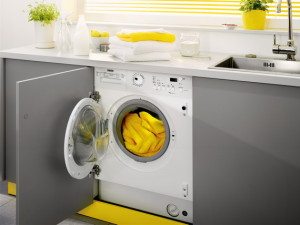 The process of installing a washing machine is directly related to what kind of machine is built into it. There are not many varieties of built-in washing machines under the countertop.
The process of installing a washing machine is directly related to what kind of machine is built into it. There are not many varieties of built-in washing machines under the countertop.
- Fully built-in. Washing machines that are placed inside furniture, for example, under a countertop with doors in front or in a cabinet. Manufacturers of such machines made sure that their products had a variety of grooves for fastening elements of door hinges, lids and other parts of furniture.
- With the possibility of embedding. While a fully built-in machine can be easily integrated with a part of a furniture structure, a “washing machine” with the possibility of being built-in cannot always be placed so well, since not all of its plastic panels (front and top) are dismantled, and there is not a sufficient number of necessary fasteners.
Important! Fully built-in machines, in contrast to machines with the possibility of embedding, are more compact and variably placed in a variety of niches.
- Horizontally loaded built-in machine. The most common type of car.They load laundry through the front part, to which the furniture door is attached, imitating a closet or bedside table. You open the bedside table and see a cuvette for powder, as well as the depths of the drum, ready to receive dirty laundry.
- Vertically loaded built-in machine. It is believed that such machines are less common because they are not as convenient. Vertically loaded machines with a hinged top lid that imitates the surface of a table top are very common. You can choose the color and material of the cover.
Some people argue until they are hoarse about which room is better to place a built-in washing machine, in the kitchen or in the bathroom? According to experts, the purpose of the room is not so important, the main thing is the preferences of the owners, the amount of free space and the possibility of connecting the car to communications. These same factors do not allow us to answer the question, which type of built-in machines is better? The best option is chosen according to the situation. We suggest you take a look rating of the best washing machines.
Possible dimensions of built-in machines
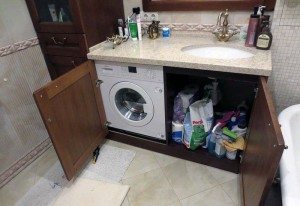 Some experts believe that if you think through the entire furniture composition in the bathroom or kitchen in advance, prepare the dimensions of each element and make it to order. Then there will be no problems with placing any washing machine in a pre-prepared niche. We cannot fully agree with this statement, especially in cases where strict space saving is involved. In this case, it is worth fighting for every centimeter of usable space, so buying an ordinary bulky washing machine is an unaffordable luxury.
Some experts believe that if you think through the entire furniture composition in the bathroom or kitchen in advance, prepare the dimensions of each element and make it to order. Then there will be no problems with placing any washing machine in a pre-prepared niche. We cannot fully agree with this statement, especially in cases where strict space saving is involved. In this case, it is worth fighting for every centimeter of usable space, so buying an ordinary bulky washing machine is an unaffordable luxury.
The dimensions of the built-in washing machine come to the fore.Some owners make the mistake of organizing a niche under the countertop for the washing machine before purchasing the machine itself. But it’s so easy to make a mistake in size, so we first buy a machine, and then organize a place for it.
You need to proceed from the fact that the minimum depth of some models of built-in machines is 52 cm, and the maximum is 60 cm. Accordingly, their height is from 81 to 85 cm, and their width is from 57 to 60 cm. You can find out more about compact washing machines Here.
In conclusion, we note that installing a built-in washing machine under a countertop cannot be called a complicated process. However, without the proper knowledge and skill, it is not easy for an unprepared person to cope with this work. That is why you should not neglect the advice of specialists and reading the instructions.
Interesting:
Reader comments
- Share your opinion - leave a comment
Categories
Washing machine repair


For buyers

For users

Dishwasher

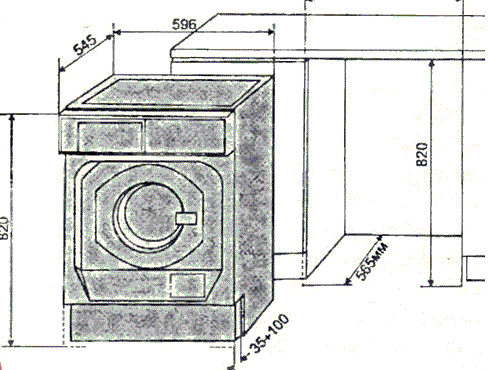

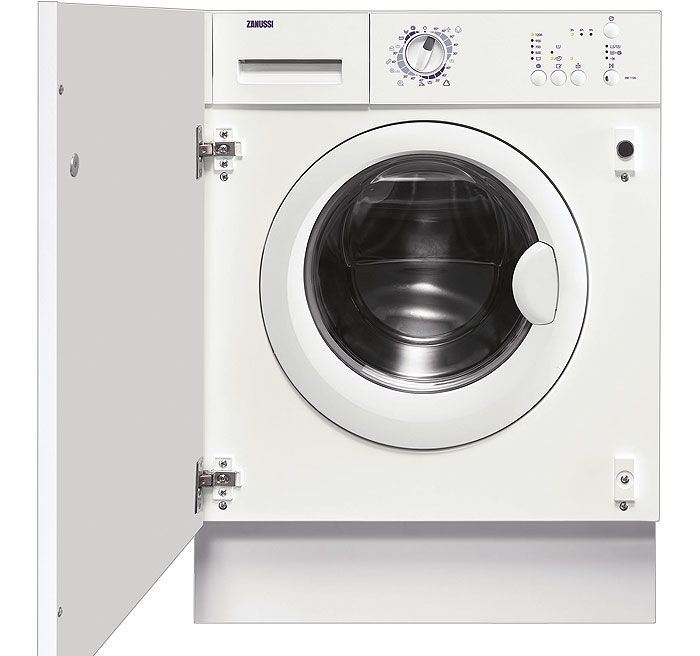
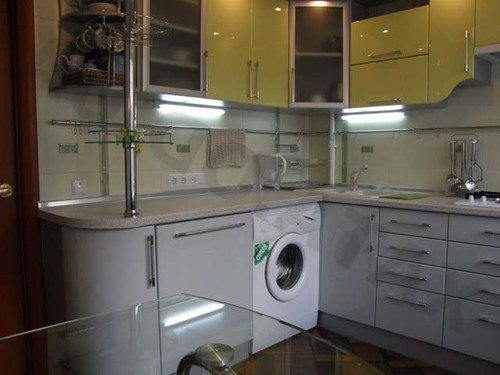
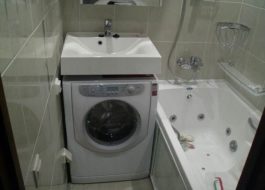











Add a comment